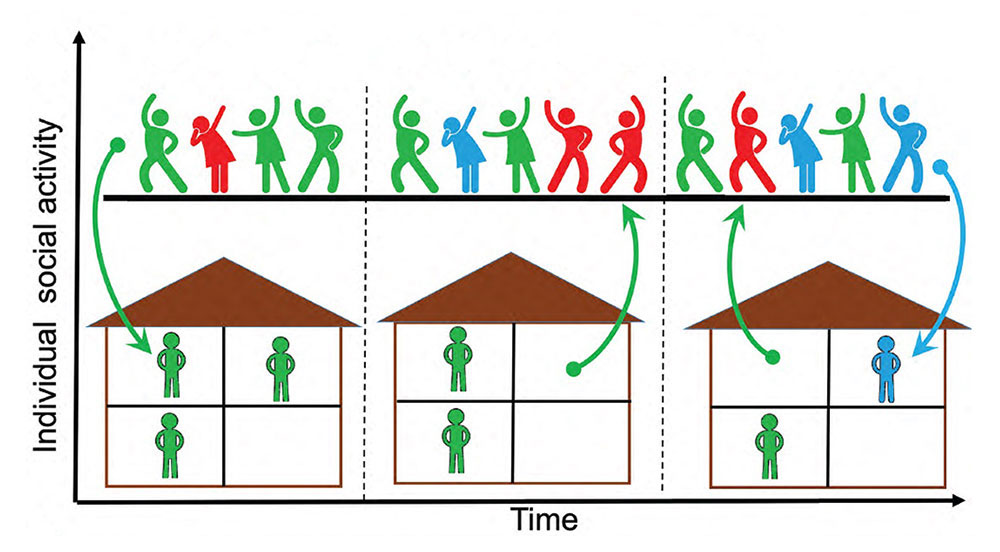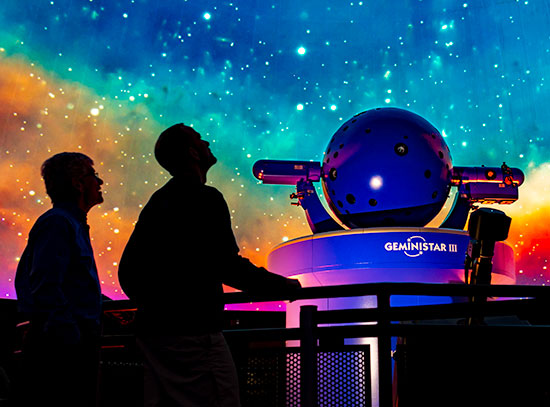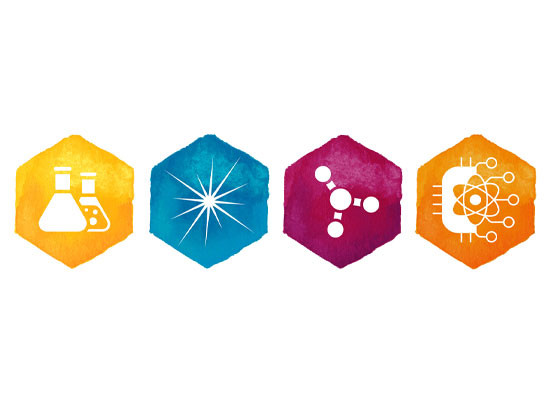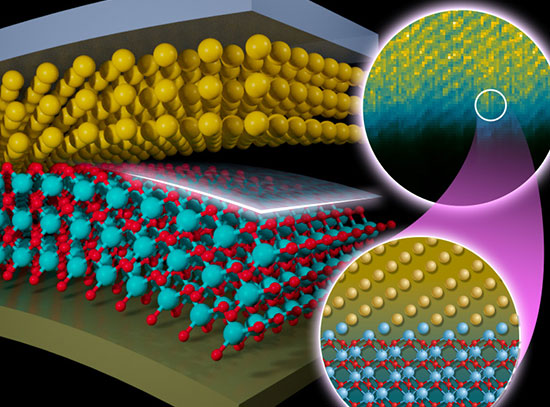New Model Describes COVID-19 Waves, Plateaus, and Endemic States
February 28, 2022
What is the scientific achievement?
CFN staff collaborated with scientists at the University of Illinois Urbana-Champaign (UIUC) to develop a new epidemiological model to explain different and sometimes unexpected outcomes of the COVID-19 pandemic. The team paired a traditional epidemiological model with a stochastic model of variable social activity, which explains both the short-term suppressions of epidemic peaks and the observed, prolonged plateau-like behaviors of COVID-19 cases.
Why does this achievement matter?
The new model is the first to incorporate stochastic social activity into a framework of epidemiological modeling for improved agreement between prediction and reported data, which has been used to support the Government of Illinois and to UIUC with their response to the pandemic.
What are the details?
It is well recognized that population heterogeneity plays an important role in the spread of epidemics. While individual variations in social activity are often assumed to be persistent, that is, constant in time, here we discuss the consequences of dynamic heterogeneity. By integrating the stochastic dynamics of social activity into traditional epidemiological models, we demonstrate the emergence of a new long timescale governing the epidemic, in broad agreement with empirical data. Our stochastic social activity model captures multiple features of real-life epidemics such as COVID-19, including prolonged plateaus and multiple waves, which are transiently suppressed due to the dynamic nature of social activity. The existence of a long timescale due to the interplay between epidemic and social dynamics provides a unifying picture of how a fast-paced epidemic typically will transition to an endemic state.
CFN Capabilities
The CFN Theory and Computation Facility was used in this collaboration.
Publication Reference
Tkachenko, Alexei V., Maslov, Sergei, Wang, Tong, Elbana, Ahmed, Wong, George N., and Goldenfeld, Nigel. ”Stochastic social behavior coupled to COVID-19 dynamics leads to waves, plateaus, and an endemic state.” Elife 10, e68341 (2021).
DOI: 10.7554/eLife.68341
- The Atlantic: We’re Not at Endemicity Yet
- University of Illinois Urbana-Champaign & Brookhaven Newsroom: New Model Accurately Describes COVID-19 Waves and Plateaus
- Brookhaven Newsroom: Top-10 Areas of Amazing Science at Brookhaven Lab in 2021
Previous work
Tkachenko, Alexei V., et al. "Time-dependent heterogeneity leads to transient suppression of the COVID-19 epidemic, not herd immunity." Proceedings of the National Academy of Sciences 118,17 (2021).
Acknowledgment of Support
This work was supported by the University of Illinois System Office, the Office of the Vice-Chancellor for Research and Innovation, the Grainger College of Engineering, and the Department of Physics at the University of Illinois at Urbana-Champaign. This research was partially done at and used resources of the Center for Functional Nanomaterials, which is a U.S. DOE Office of Science Facility, at Brookhaven National Laboratory under Contract No. DE-SC0012704. The work of SM was supported in part by the NSF award 2107344.
2022-19462 | INT/EXT | Newsroom










